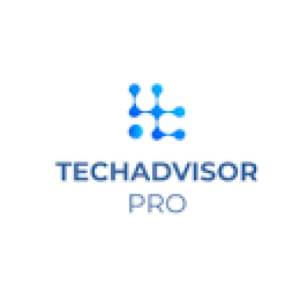Within the rapidly evolving field of business-to-business (B2B) operations, data has become essential for making strategic decisions and fostering long-term growth. Business success is largely dependent on B2B data, which is used for everything from spotting market trends to streamlining client interactions. This thorough manual explores the nuances of business-to-business (B2B) data and provides decision-makers, marketers, and business owners with useful information.
Types of B2B Data
B2B data encompasses a diverse array of information crucial for understanding and engaging with business clients:
- Firmographic Data: Firmographic data provides essential details about a company’s structure and characteristics. This includes industry type, company size, annual revenue, geographic location, and key decision-makers. By analyzing firmographic data, businesses can identify their target market segments and tailor their marketing strategies accordingly.
For example, a software company targeting small-to-medium enterprises (SMEs) in the healthcare sector can use firmographic data to pinpoint potential clients and craft personalized marketing campaigns.
- Technographic Data: Technographic data focuses on the technological landscape of businesses. It includes information about the software, hardware, and IT infrastructure used by companies. Technographic data helps businesses understand their clients’ technology preferences and readiness for digital solutions.
For instance, a cybersecurity firm can utilize technographic data to identify businesses using outdated security software and offer tailored solutions to enhance their cybersecurity posture.
- Behavioral Data: Behavioral data tracks the actions and interactions of businesses online and offline. This includes website visits, content engagement, purchase history, and communication preferences. Analyzing behavioral data provides insights into customer preferences, buying patterns, and decision-making processes.
Understanding these types of B2B data enables businesses to segment their target audience effectively, personalize marketing strategies, and tailor their offerings to meet specific client needs.
How do you find B2B data?
Effectively sourcing B2B data requires a strategic approach:
- Utilizing Specialized Databases: Accessing industry-specific databases and B2B data providers that aggregate and curate comprehensive datasets. These databases offer detailed insights into companies’ firmographic, technographic, and behavioral data, allowing businesses to access accurate and up-to-date information for targeted marketing and sales efforts.
- Data Enrichment Services: Data enrichment involves enhancing existing datasets with additional information to enrich customer profiles and improve targeting accuracy. This process includes appending missing data fields, updating outdated information, and validating contact details to ensure data completeness and relevance.
For example, a financial services company can use data enrichment services to supplement their client database with recent financial transactions and investment preferences, enabling personalized financial advice and targeted cross-selling opportunities.
- Harnessing CRM Systems: Customer Relationship Management (CRM) systems play a crucial role in managing and leveraging B2B data effectively. These platforms centralize customer information, interactions, and transaction histories, providing a holistic view of client relationships.
Integrating B2B data into CRM systems can enhance business efficiency by streamlining data management, tracking customer journeys, and synchronizing sales and marketing activities.
Roadblocks in Utilizing B2B Data
While B2B data offers immense potential, several challenges must be navigated:
- Data Quality Issues: Inaccurate or outdated data can lead to flawed insights and ineffective marketing campaigns. Maintaining data quality involves implementing data cleansing processes, deduplication techniques, and validation checks to ensure data accuracy and reliability. Poor data quality is estimated to cost businesses 20-30% of their revenue annually.
- Compliance and Data Privacy: Adhering to stringent data protection regulations (e.g., GDPR, CCPA) is essential for ethical data usage and client trust. Compliance measures include obtaining explicit consent for data collection, implementing data encryption and anonymization techniques, and providing transparent privacy policies.
- Integration Complexities: Seamlessly integrating B2B data across different platforms and systems can be challenging due to compatibility issues and data silos. Overcoming integration complexities involves adopting interoperable solutions, leveraging application programming interfaces (APIs), and establishing data governance frameworks.
Overcoming these roadblocks requires a proactive approach, including investing in data governance frameworks, training staff on data management best practices, and partnering with reliable data providers committed to data integrity and compliance.
Ensuring Accuracy and Security in B2B Data
Maintaining the integrity and security of B2B data is crucial:
- Regular Data Verification: Implementing automated verification processes to validate data accuracy and completeness, minimizing errors and redundancies. Data verification involves cross-referencing information from multiple sources, conducting validation checks against predefined criteria, and updating records with verified data points.
For example, a marketing agency can use automated verification tools to validate email addresses and phone numbers in their client database, ensuring the deliverability of marketing campaigns and maximizing campaign ROI.
- Data Security Measures: Employing encryption techniques, access controls, and secure data storage solutions to safeguard sensitive business information against cyber threats and breaches.
- Comprehensive Data Governance: Establishing clear policies and protocols for data collection, usage, and retention ensures transparency and accountability across organizational departments. Data governance frameworks include defining data ownership responsibilities, establishing data quality standards, and implementing data lifecycle management practices.
By prioritizing data accuracy and security, businesses can enhance decision-making capabilities, reduce risks, and foster a culture of data-driven innovation.
Conclusion
Utilizing B2B data is crucial for business growth and competitiveness in the market. By understanding data types, addressing challenges, and implementing best practices, businesses can unlock opportunities for personalized marketing, enhanced customer engagement, and strategic expansion.
I hope you find the above content helpful. For more such informative content please visit Techadvisorpro.com.










